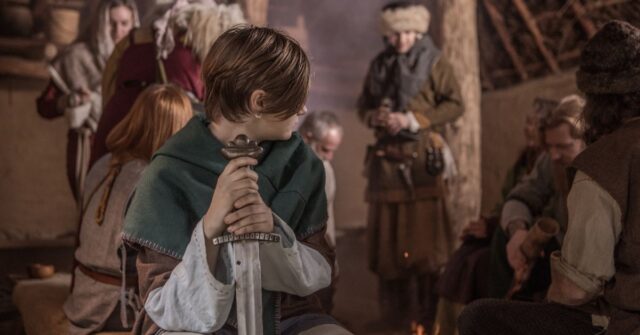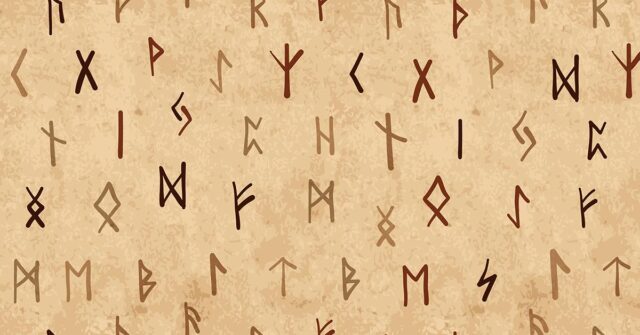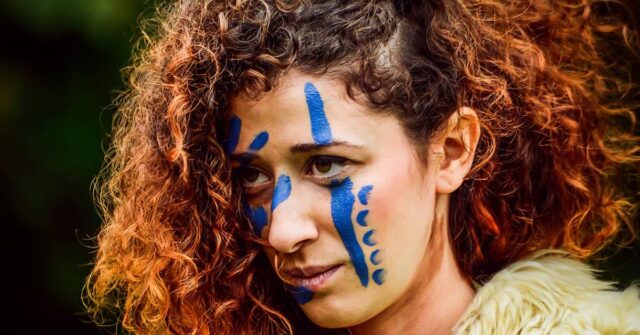Unveiling the world of the Vikings beyond warfare and exploration, we enter the realm of their sartorial expression. The vibrancy and symbolism of color in Viking clothing reveal a nuanced cultural narrative beyond the commonly assumed monotones.
This article delves into the spectrum of colors found in Viking attire, their sources, cultural significance, and modern misconceptions.
Introduction
The popular image of Vikings often portrays them in bland, uniform clothing, void of bright colors. However, archaeological and historical evidence suggests otherwise.
Vikings had access to a range of colors, and their use extended beyond mere aesthetics. This article sets out to explore the varied palette of Viking clothing and its significance in their society.
Historical Overview
Understanding the use of color in Viking clothing necessitates a brief exploration of their history, particularly as it pertains to textile production and societal norms.
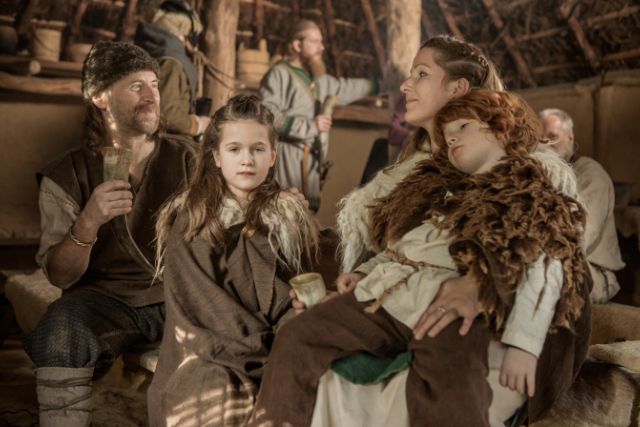

The Importance of Clothing in Viking Society
In Viking society, clothing served multiple purposes. Beyond providing warmth and protection, it was an indicator of status, occupation, marital status, and more.
The choice of color, fabric, and design spoke volumes about the wearer, making the study of Viking clothing an insightful dive into their culture.
Viking Textile Production
Vikings produced their clothing from a variety of materials including wool, linen, and silk, with wool being the most common. Dyeing was an integral part of the production process, using dyes derived from various natural sources.
The Viking Color Palette
Contrary to popular belief, the Vikings had access to a wide array of colors, from deep blues to bright yellows. The vibrancy and variety of their clothing colors challenge the common perception of Vikings as invariably clad in grey or brown.
Origin of Dyes
Vikings used natural dyes derived from plants, animals, and minerals. They often used vegetable dyes, made from plant materials like roots, bark, leaves, and berries, to dye their clothes. These dyes offered a range of colors from red and yellow to green and blue.
Commonly Used Colors
Viking clothing commonly featured colors such as red, blue, green, and yellow. Blue, derived from woad, and red, obtained from madder root, were particularly popular.
Browns and grays, achieved using walnut and lichen, were also prevalent, especially among lower social classes.
Rare and Valued Colors
Among the spectrum of Viking colors, some were notably rare and treasured. Purple, for example, was difficult to produce and thus usually reserved for the elite.
Bright reds and yellows, too, were highly valued as they required significant labor and resources to produce.
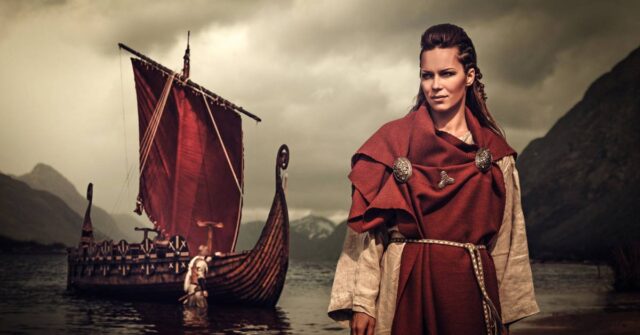

Color and Social Status
The color of Viking clothing wasn’t merely a matter of aesthetic choice—it also signaled the wearer’s social standing. Variations in color, brightness, and material quality often denoted differences in wealth and status.
Colors for the Elite
Richer, more vibrant colors were typically worn by the nobility and the affluent. These individuals had the means to afford expensive dyes, such as those required to produce bright reds or purples.
Additionally, the ability to maintain the brightness of the color, despite the wear and tear of time, signified wealth.
Colors for the Common Folk
Ordinary citizens and the lower social classes typically wore clothing in more muted shades. These colors were derived from readily available and inexpensive dye sources.
Browns, grays, and dull greens were most common among this segment of Viking society.
Color in Everyday Viking Clothing
On a daily basis, the average Viking’s wardrobe was functional yet expressive. Colors played a key role in this expression, with everyday clothing displaying a variety of hues based on occupation, region, and personal preference.
Men’s Clothing
Viking men typically wore trousers and tunics made from wool. The colors of these garments were primarily blues, browns, and grays, but richer hues were not unheard of among wealthier individuals.
Brightly colored trims or bands often adorned these basic garments, adding an element of personal flair.
Women’s Clothing
Viking women wore long linen dresses with a woolen overdress or apron. The overdress was often brightly colored, with shades of red, green, and blue being particularly popular.
They also enjoyed a degree of ornamentation in their clothing, with decorative woven bands and metal brooches adding splashes of color.


Color in Ceremonial Viking Clothing
For special occasions, festivals, and ceremonies, Vikings wore more elaborate and colorful attire. These events offered an opportunity to display one’s wealth and status, leading to the use of rare, vibrant colors and intricate designs.
Wedding Attire
Weddings were grand events in Viking society, and the clothing reflected this significance. Brides often wore bright red, symbolizing fertility, while grooms wore deep blues or blacks.
High-status individuals could also have garments adorned with silver or gold threads, signifying their wealth and importance.
Festivals and Feasts
Festivals and feasts were occasions for Vikings to showcase their finest clothes. Bright colors, metallic trims, and elaborate patterns were the norms during these celebrations, creating a vibrant tapestry of colors and styles among the attendees.
Funerary Rites
During Viking funerary rites, the deceased were often dressed in their best attire. This included garments of high-quality fabric in rich, bright colors.
It was believed that these clothes would accompany the departed into the afterlife, signifying their status and wealth.
Color Symbolism in Viking Clothing
The use of color in Viking clothing wasn’t merely ornamental, it also carried symbolic weight. Some colors were associated with specific deities, natural elements, or social roles, imbuing Viking attire with additional layers of meaning.
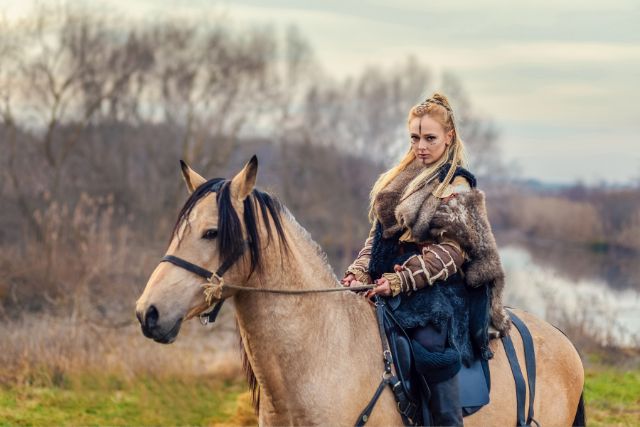

Sacred Colors
Vikings associated certain colors with their deities and mythological beliefs. For example, red was associated with Thor, the god of thunder, while green was linked to Freya, the goddess of love and fertility.
These associations could influence the color choice in Viking clothing, particularly during religious or ceremonial events.
Color and Rune Associations
The Vikings’ runic alphabet, known as the Futhark, also bore connections with color symbolism. Each rune had a specific meaning and corresponding color.
This correlation between runes and colors further enriched the cultural narrative embodied in Viking clothing.
Archaeological Evidence
Our understanding of color use in Viking clothing primarily comes from archaeological findings and historical texts. These sources provide valuable insights, though interpretation often requires careful consideration of context and potential bias.
Textile Fragments
Archaeological digs have uncovered numerous fragments of Viking textiles. Analyses of these fragments, including tests for dye residues, have shed light on the colors popularly used in Viking times.
Such findings, however, can be affected by the passage of time and conditions of preservation.
Art and Literature
Viking sagas, poetry, and surviving works of art also provide insights into the colors used in their clothing.
Though often metaphorical and subject to interpretation, these sources nevertheless offer valuable glimpses into Viking color symbolism and aesthetic preferences.
Modern Interpretations and Misconceptions
The depiction of Viking attire in modern culture often diverges from historical reality. Misconceptions, fueled by popular media and a lack of public knowledge, have resulted in a skewed perception of Viking clothing and its use of color.
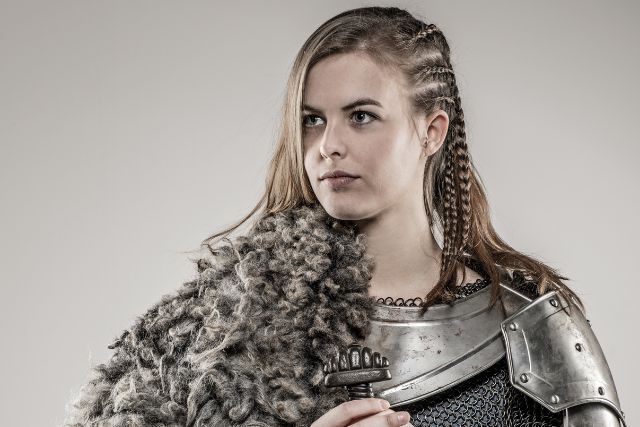

Hollywood’s Influence
Popular media, particularly Hollywood, has significantly shaped our vision of the Vikings. In many films and TV shows, Vikings are portrayed wearing drab, colorless clothes, contrary to the vibrant hues evidenced in historical and archaeological records.
This has perpetuated the false notion of the Vikings as a people lacking in colorful clothing.
Re-enactment Accuracy
While many historical re-enactments strive for accuracy, they can sometimes miss the mark when it comes to color in Viking clothing.
Constraints related to budget, availability of materials, and contemporary aesthetic sensibilities can result in depictions that are less colorful than the historical reality.
Conclusion
The use of color in Viking clothing, far from being limited or monotonous, was a vibrant and expressive aspect of their culture. It was deeply interwoven with societal norms, religious beliefs, and individual status.
As we continue to study and reinterpret the past, a more colorful and nuanced image of the Vikings emerges, challenging modern misconceptions and enriching our understanding of this fascinating historical period.








